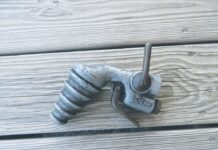I admit it. I am at a point in my life where I do not like winter very much. This season, at least in my neck of the woods, it seems that there is mud EVERYWHERE, it still gets dark outside too early to actually accomplish much outside, and the germs just keep coming back around. But there are opportunities to learn and grow through the winter months.
Now is the time to plan what the rest of the year could look like. Do you need to change anything in the layout or management of your operation to make life better for you, your family, workers and animals? Are there practices you would like to implement in your operation? Now is the time to plan those changes.
Map it out
I tend to learn visually. You can tell me directions, but if I can pull up the map and see things from above, I get a better sense of what the plan is.
The same can be true for your pastures. Pull up a map of your farm and lay things out to see what would be the most help in your operation. Be sure to mark water sources, permanent fencing in place, feeding areas, hay storage, shelters, feeding pads, and any problem areas (poor drainage, known invasive plant issues, etc.) on your land.
As you look at your farm map, plan out any needed fencing (rotational or permanent) or building projects while supplies may be ordered. With extended delivery times still in place in many places and industries, planning for projects and workers can be vital to get projects done in a timely manner.
As you consider fencing options, consider fencing around streams, ponds, and other natural water sources. Controlling access to these water supplies can protect both animals and water sources. Problems to the water source can include bank erosion, siltation, nutrient overloads, and overall poor quality. Animals can be exposed to bacteria, toxins and increased hoof and leg injuries. In the long run, taking care of these areas over the next year show areas with less messy mud in the future.
If your map does not show one, you may look at adding a grazing area considered to be a “sacrifice lot” to your plans. This is an area where animals can be contained for feeding when forages are not available or when weather conditions are poor. It is typically close to freeze-proof water sources and hay storage areas while allowing for easy access to the animals. The selected area should have a low slope to prevent erosion issues when muddy conditions lead to plant root damage. If animals stay on the area for an extended time, plan to reseed the area as soon as conditions are right.
Plan your future forages
Legumes can be planted to improve pastures in the next month. This can improve hay quality and yield for considered pastures. Legumes prefer well-drained soils and choosing areas where pasture plants have been grazed closely will help ensure that the seeds have good germination rates. There are several benefits to seeding legumes into pastures, including the decreased need to apply nitrogen, and increased palatability of a stand. However, cattle can prefer legumes and rest periods are often needed for pastures to ensure that plants have resources to regrow.
Even if you may still not have as many daylight hours as you would like to manage your operation, there can be valuable time put into planning for the year ahead to make it a successful one. Several of the practices outlined here have been shared as the result of questions asked locally. If you would like more resources on any of the above topics, contact your local extension office.













